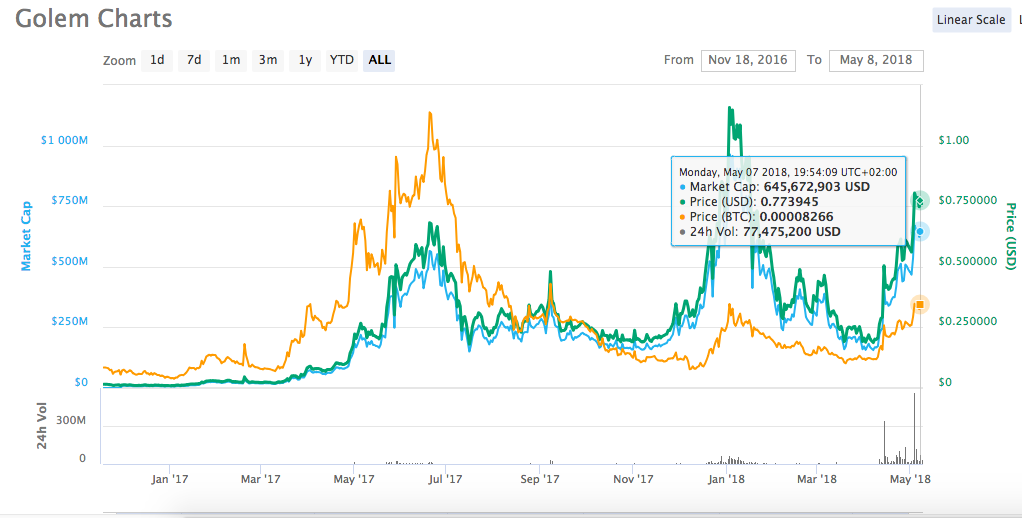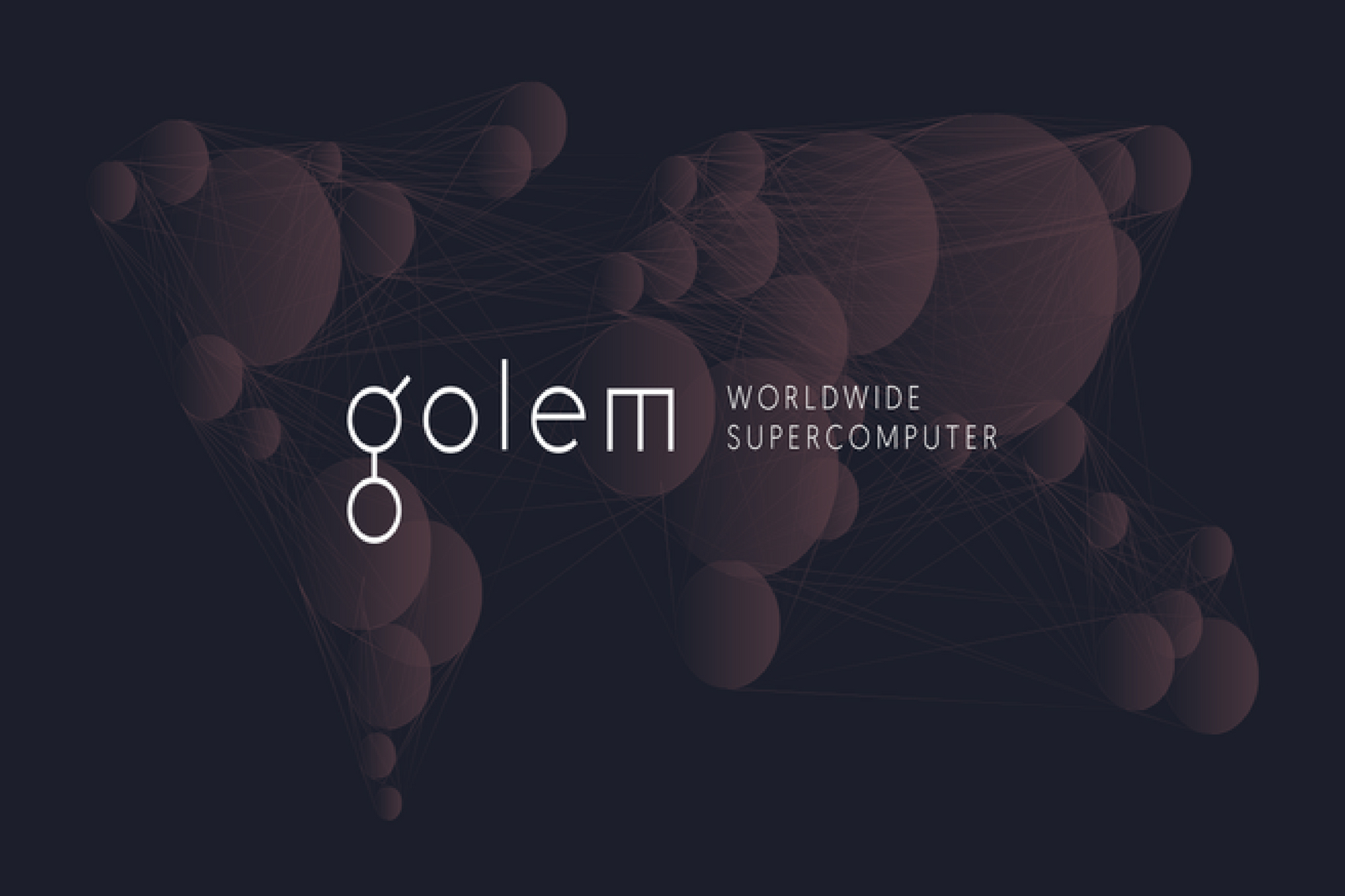Golem, the Ethereum-based CPU power-renting network (strapline: computing power. shared), is undoubtedly one of the most ambitious projects out there. Last month we wrote about Golem’s Brass Beta mainnet launch, a seminal moment in their 4-phase roadmap. In the time since the launch, a lot has happened, including another AMA.
A common problem with many crypto projects is their lack of transparency and/or poor communication. With a dedication to consistent AMAs, Golem is showing themselves to be different. So once again, CEO Julian Zawistowki (and team) lined up to answer questions on Reddit.
For keen followers of the project, this may already be old news, but for all others, this is an attempt to help fill in the gaps and provide some context. The AMA is over 200 comments long, so we’ve made an effort to distill the most important points.
The full thread can be read here (well worth a read), and credit must go to Redditor bose25, who compiled a thorough summary of the AMA.
Roadmap
Golem is preparing to present a new (and long-awaited!) roadmap in the next few months along with an updated whitepaper. As explained by the team, the delay was due to their need to collect data from the mainnet, incorporate into a wider strategy, and a commitment to doing things incrementally, not rushing at all problems simultaneously.
But new roadmap or not, Zawistowki emphasized the priorities of his team. These are (to paraphrase):
- Finalize Brass, especially to deliver a working Concent service
- Add GPU support in Brass. This is not very far away but needs some finalizing
- Add support for proprietary software on Brass Golem
- Create a number of CGI and non-CGI use cases in PoC
A redesign of the network monitor that incorporates more metrics is said to be underway as well, along with hints of a website touch-up and rebranding work.
Adoption
In order for Golem to gain wider usage, a solution is needed to make GNT easily accessible for average Joes (among other things). Getting to these “blue oceans” of non-crypto users is a problem that pretty much every project is facing, save for Bitcoin and Ethereum.
In the AMA, Golem acknowledged the need for more fiat-GNT solutions, but stated that:
We are not planning to create an in-house solution. We focus our efforts on creating an awesome product (thus stimulating demand for GNT), while leaving the other side of this equation to different teams.
There may be nothing wrong with focusing on their tech and assuming other solutions can be integrated to get more money (and users) into the GNT ecosystem. But the above statement also had hints of “build it and they will come” bravado that seems all too common in crypto.
The follow-up question(s) regarding adoption did little to dispel fears about network effects, mass adoption or a solid go-to market strategy. One Redditor also pointed out that the current configuration required to run Golem was not easy for nontechnical people. They queried the team as to whether or not things could be simplified. The answer walked through various fixes but concluded, “there is no easy solution to this problem currently.”
There was also some positive news on this front, and the team did mention that they were in talks with the Blender Foundation to figure out the next steps towards making Golem more accessible for nontechy people. Detailed onboarding documentation has been created, and a chatroom has been opened to that end.
Golem is also said to have an experienced marketing team in place, ready to “reach-out to the non-crypto community as soon as we’re ready for it.” Pushing for growth is all about the timing and Golem seems to be taking some of the right steps but the jury is definitely still out as to whether they’re doing enough.
Technical Updates

Transaction speeds on Ethereum has already become a problem for Golem, and it’s one the team has been asked about repeatedly.
Their answer has remained consistent. Golem doesn’t need “real-time” speed, and the issue is mitigated (to a degree) by transaction batching. The team is also currently mulling over which Ethereum scaling proposal to use, and they indicated in the AMA that this would be implemented before the end of 2018.
There were numerous other technical questions from the community and updates from the team. In an effort to be concise, I’ve bulleted some of the most important information below.
Brass
- It is now possible to provide computing power and be compensated in GNT tokens (the primary function) on the Golem mainnet.
- The move from testnet to mainnet has provided quite a few learnings for the team, including how Golem scales and primary user problems (and how to solve them).
- Blender and (partially) Luxrender are the only use cases currently supported in Brass. Machine learning, and GPU support will be focused on in the coming few months.
CEO Zawistowki was also directly asked if he felt that Brass should’ve been launched earlier. His response (to paraphrase) was that in retrospect, yes the launch should’ve happened sooner but the team has learned a lot in the process and has a better feedback loop in place now. If you’ve been agitating for more action, this comment likely felt vindicating.
Non-Brass
- Currently, there is no support for a requester to also “part-process” their own data. A non-guaranteed workaround is possible, but the solution has yet to be ironed out.
- Integrating decentralized cloud storage (such as Sia, FileCoin, and Storj) are planned, but no current solutions fit Golem’s requirements.
- Confidentiality of requested tasks isn’t guaranteed, and while there are still a ton of cases where this isn’t an issue, the team is working to address this.
Partnerships

In the past, Golem has hinted at coming university partnership announcements. In the most recent AMA, they clarified things. At least 4 universities are interested in partnerships: the first could be announced in May, another in the fall (as it’s not currently a good fit). 2 more are said to be beginning talks towards the end of May and into June.
There were also multiple AMA comments that confirmed Golem is continuing to push the groundswell of connections around their project. Golem is reaching out to a number of potential customers and partners. The vast majority of companies they’ve spoken with (and who fit technical requirements) are said to be interested in doing at least a proof of concept at some point.
One team member used the AMA to actively reach out:
If you’re a crypto project that needs computing power and we’re not talking yet, be sure to reach out to us and we’ll be in touch shortly.
Another prong of the effort to look for relevant crypto projects collaborations is Golem’s presence at all “legitimate” developer conferences. They remain active through the Ethereum Community Fund. There was also a brief mention of Golem’s existing partnership with FriendUp, and while there has not been as much activity as originally intended (due to the mainnet launch), there are plans in place to “catch up later in the year.”
Use Cases
Golem wants to have a number of CGI and non-CGI use cases in PoC (some to be integrated with Brass), and while rendering might be the only game in town right now, the team has plenty of other use-case ideas in the pipeline.
The AMA provided the chance to air these. Machine learning, neural networks, image recognition, transcoding, and scientific computation use cases are all either being worked on or should be prepared for a proof of concept at present. Zawistowki also mentioned that adding proprietary software software support is on the agenda as well.
As Golem expands its offerings, some were left wondering if low-latency (high data volume with minimal delay) use cases would be feasible. The answer was cautious but indicated a belief that Golem should be able to handle low-latency use cases in the future.
At its most basic, the Golem platform is designed to be a vehicle for users to rent out/purchase idle computer resources. But to think of it strictly in those terms is to miss the big picture. What may one day run on top of it is really only bounded by developer’s imaginations. In the future, high computation throughput activities like DNA processing (for example) may be a reality on Golem.
Final Thoughts
Although a big leap is still needed to reach its dream, the Golem team is happy with the progress that’s been made. If you’re a fan of the project, this AMA gave you many reasons to feel good. A lot of time has passed since the ICO, and to simply see the team launch a product (beta as it may be) is fantastic.
Progress on Brass and other developments is steaming along, and there has been plenty of news regarding further partnerships and future use cases. The GNT token currently sits at #45 on the top crypto list (by market cap) and was recently listed by Bithumb and Binance. This predictably caused a big price reaction, and GNT climbed back toward its ATH of January 2018.

With awareness rising, technical progress being made, and more liquidity in the token (as people FOMO in), things look pretty rosy. Speculation as to if/when the price will break $1 or whether $10 by the end of the year is reasonable has sprung up. Buying a surging coin is rarely a good decision, but knowing that Golem has a rock solid team and understanding their vision makes GNT a potentially (wildly) undervalued hold for the future.
Golem is definitely not sailing through completely calm seas, however. The team has demonstrated an awareness of how important mainstream adoption is but, as mentioned above, this has felt more like talk than action. To be fair, promoting an immature product doesn’t make much sense, and some may (perhaps rightly) defend Golem’s lack of a marketing push or the timing of that push. Whether or not Golem has a plan (or can execute said plan) to grow by millions of users remains a big question mark.
There are, of course, still significant technical challenges to overcome, and there are competitors like SONM and iEXEC to contend with as well.
But Golem still has over 50% of its ICO runway left (having been aided by ETH appreciation), it’s hosting a meetup in NYC in a few days, and it has plans to expand its office presence to blockchain hubs like San Francisco and London.
The bottom line here is this: Golem deserves more serious consideration from investors than it tends to get, and for anyone interested in disempowering Amazon Web Services, they deserve support as well.
Related: Distributed Computing on the Blockchain: 5 Projects to Watch Out For

